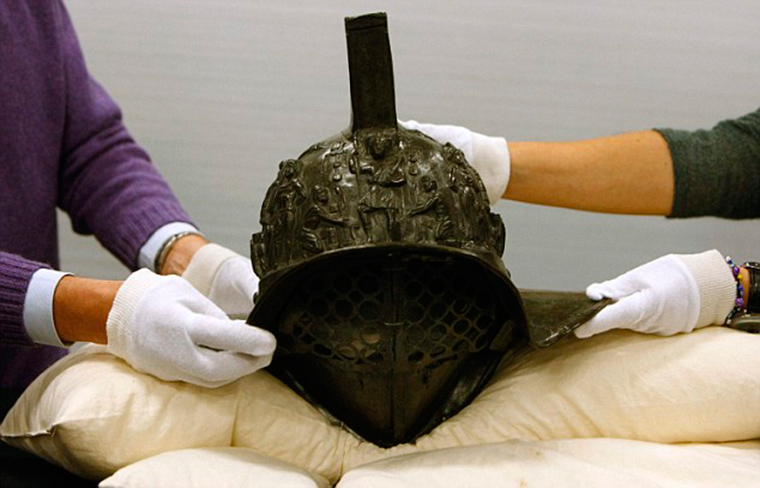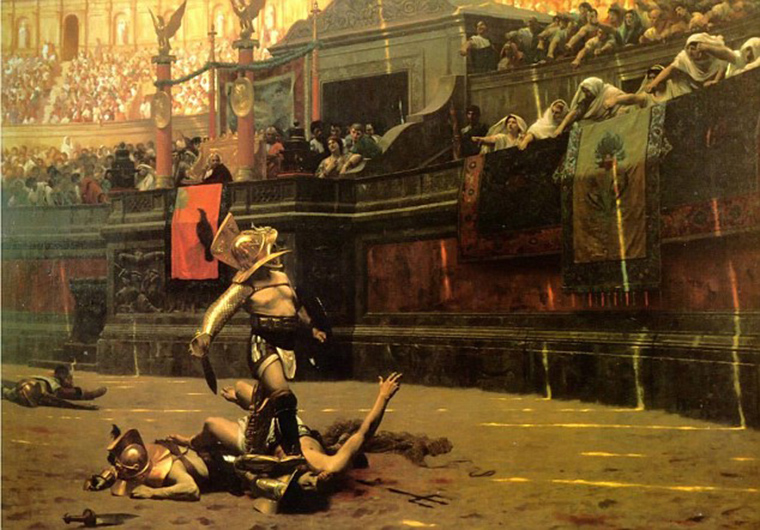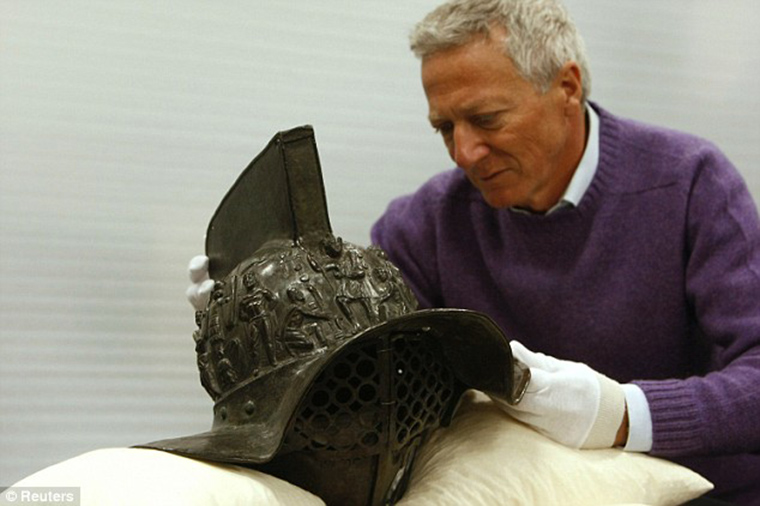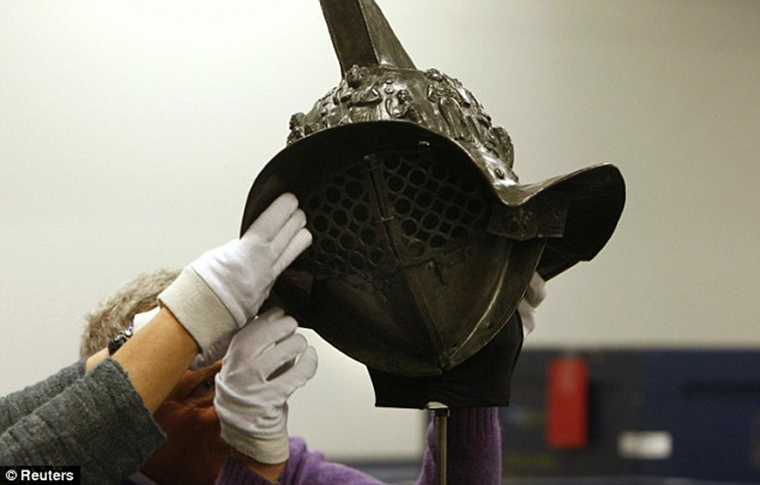In the ruins of Pompeii, a fascinating discovery was made: a 2,000-year-old gladiator’s helmet, now the center of attention as it travels to Melbourne for exhibition. This ancient bronze helmet is one of 250 artifacts brought to the Melbourne Museum, offering a window into life in the ancient Roman city.
A Preview of the Exhibition at the Melbourne Museum
Curators at the Melbourne Museum unveiled the gladiator’s helmet as a key preview item for the exhibition. According to Brett Dunlop, the museum manager, the helmet survived the catastrophic eruption of Mount Vesuvius in 79 AD and was recovered approximately 200 years ago.
Dunlop reported that the helmet was found in a storeroom located in the gymnasium area of Pompeii, alongside other gladiatorial equipment such as shin guards and shoulder armor. It is believed that many gladiators fled the scene during the eruption, leaving behind their gear, which has remained preserved under volcanic ash for centuries.

The Murmillo Gladiator’s Helmet

This bronze helmet, believed to have been worn by a type of gladiator known as a murmillo, is an iconic example of ancient Roman armor. The murmillo gladiators were heavily armored fighters, distinguishable by their high-crest helmets and broad, fish-shaped rims. The name “murmillo” comes from the Greek word for a type of saltwater fish, a reference to the helmet’s shape.

The Gladiator’s Equipment and Fighting Style
In addition to the helmet, the murmillo gladiator wore a loincloth, belt, and short greaves on the lower legs. Their arm was protected by a linen arm guard, and they carried a curved rectangular shield similar to that used by Roman legionaries. Their primary weapon was the gladius, a short, straight sword from which the word “gladiator” is derived.
Murmillos shared some of their equipment with ancient Greek warriors, and their fighting style closely resembled that of Greek fighters. Often, murmillos were paired in battle against the retiarius, a lightly armored, net-wielding gladiator, offering a dramatic contrast between slow, heavily armored fighters and fast, agile opponents.

Historical Significance of Murmillo vs. Retiarius Battles
The pairing of murmillos and other gladiator types has been depicted in Pompeii frescos and graffiti. One notable example is a fresco showing a murmillo named Marcus Atillus, who, with only a single match under his belt, defeated the seasoned gladiator Lucius Raecius Felix, who had previously won 12 matches. In the image, Atillus stands victorious over Felix, who is shown kneeling, disarmed, and unhelmeted. Remarkably, Felix survived the fight and was granted his freedom, a testament to the brutal yet structured nature of gladiatorial combat.
This discovery, along with the stories of gladiators like Atillus and Felix, offers a vivid glimpse into the life and culture of ancient Rome, as well as the enduring allure of gladiatorial spectacles.
This remarkable helmet not only represents the power and strength of Rome’s warriors but also stands as a preserved piece of history, connecting us to the ancient world.

